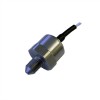High range pressure measurement sensing devices. Analogue & digital output pressure sensors for measuring high range pressures of liquids or gases.
Products
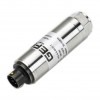 TPS Strain Gauge Pressure Sensor - Strain gauge pressure sensor with a millivolt output direct from a four arm wheatstone bridge strain gauge circuit in pressure ranges from 10 up to 1000 bar gauge.
TPS Strain Gauge Pressure Sensor - Strain gauge pressure sensor with a millivolt output direct from a four arm wheatstone bridge strain gauge circuit in pressure ranges from 10 up to 1000 bar gauge. TPSA Precision High Pressure Transducer - High pressure transducer for pressure testing applications with pressure ranges from 0...4 bar (60 psi) up to 0...1000 bar (15,000 psi) gauge with a measurement accuracy of 0.1%.
TPSA Precision High Pressure Transducer - High pressure transducer for pressure testing applications with pressure ranges from 0...4 bar (60 psi) up to 0...1000 bar (15,000 psi) gauge with a measurement accuracy of 0.1%.
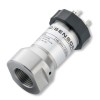 DMP334 Hydraulic Pressure Transducer for Very High Pressures
DMP334 Hydraulic Pressure Transducer for Very High Pressures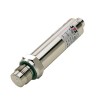 ATM/T Pressure and Temperature Dual Output Transmitter
ATM/T Pressure and Temperature Dual Output Transmitter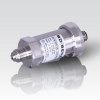 DMP 336 Hydrogen (H2) Gas Compatible Pressure Transmitter
DMP 336 Hydrogen (H2) Gas Compatible Pressure Transmitter 33X High Accuracy Digital Output Pressure Sensor
33X High Accuracy Digital Output Pressure Sensor
Applications
 5000 psi WECO® 1502 pressure transmitter and loop indicator - Loop powered display for mounting on a wall in hazardous area connected to a pressure transmitter with hammer union WECO™ 1502 process connection
5000 psi WECO® 1502 pressure transmitter and loop indicator - Loop powered display for mounting on a wall in hazardous area connected to a pressure transmitter with hammer union WECO™ 1502 process connection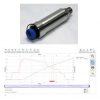 70,000 psi usb pressure sensor for calibration use with hydraulic screw press and PC computer - An ultra high range digital pressure sensor for calibration use to measure pressure of hydraulic oil over a range of 0 to 70,000 psi g from the Autoclave F-250-C female process connection, and sending the corresponding pressure reading through USB interface to the PC monitoring and logging software.
70,000 psi usb pressure sensor for calibration use with hydraulic screw press and PC computer - An ultra high range digital pressure sensor for calibration use to measure pressure of hydraulic oil over a range of 0 to 70,000 psi g from the Autoclave F-250-C female process connection, and sending the corresponding pressure reading through USB interface to the PC monitoring and logging software.
 Alternative 200 bar melt pressure transmitter with T/C
Alternative 200 bar melt pressure transmitter with T/C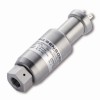 Cold isostatic press 5000 barg 0-10Vdc output high range freshwater pressure transducer
Cold isostatic press 5000 barg 0-10Vdc output high range freshwater pressure transducer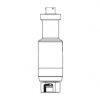 Oil field equipment testing 20,000 psi g 4-20mA out freshwater pressure sensor
Oil field equipment testing 20,000 psi g 4-20mA out freshwater pressure sensor 1000 barg hydraulic spike pressure sensor for testing robotic automation
1000 barg hydraulic spike pressure sensor for testing robotic automation
- 600 barg 4-20mA output wastewater pressure sensor for experimental component testing
- 600 barg freshwater booster pump pressure switch, gauge and transmitter
- 1000 barg 4-20mA output synthetic oil pressure sensor for hydraulic pump controls
- 1600 barg 4-20mA freshwater pressure sensor for hydrostatic testing
- 3000 psia high accuracy 0-10Vdc out pressure sensor for leak checking pressurized tanks
- 600 barg 4-20mA pressure transducer for mobile crane hydraulic control use
Product Types
 700 bar, 10000 psi, 70 MPa Pressure Sensors, Transducers & Transmitters - High range pressure sensors with a measurement range from 0 to 700 bar, 10,000 psi, or 70 MPa.
700 bar, 10000 psi, 70 MPa Pressure Sensors, Transducers & Transmitters - High range pressure sensors with a measurement range from 0 to 700 bar, 10,000 psi, or 70 MPa.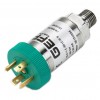 350 bar, 5000 psi, 35 MPa Pressure Sensors, Transducers & Transmitters - High range pressure sensors with a measurement range from 0 to 350 bar, 5,000 psi, or 35 MPa.
350 bar, 5000 psi, 35 MPa Pressure Sensors, Transducers & Transmitters - High range pressure sensors with a measurement range from 0 to 350 bar, 5,000 psi, or 35 MPa. 600 bar, 9000 psi, 60 MPa Pressure Sensors, Transducers & Transmitters - High pressure range sensors with a measurement range from 0 to 600 bar, 9000 psi, or 60 MPa.
600 bar, 9000 psi, 60 MPa Pressure Sensors, Transducers & Transmitters - High pressure range sensors with a measurement range from 0 to 600 bar, 9000 psi, or 60 MPa. High Range Voltage Output Pressure Transducers - High range voltage output pressure transducers for measuring higher pressures on hydraulic test rigs and control systems with 0-5, 1-5, 0-10 and 1-10 volt output signals.
High Range Voltage Output Pressure Transducers - High range voltage output pressure transducers for measuring higher pressures on hydraulic test rigs and control systems with 0-5, 1-5, 0-10 and 1-10 volt output signals. High Range USB Pressure Sensors - High range pressure measurement Universal Serial Bus (USB) interface computer connection pressure sensing devices
High Range USB Pressure Sensors - High range pressure measurement Universal Serial Bus (USB) interface computer connection pressure sensing devices High Range Digital Interface Pressure Sensors - Hydraulic range pressure sensors with USB, RS232 or RS485 interface electronics. Improve high pressure measurement accuracy with a high resolution computer interface.
High Range Digital Interface Pressure Sensors - Hydraulic range pressure sensors with USB, RS232 or RS485 interface electronics. Improve high pressure measurement accuracy with a high resolution computer interface. High Range Pressure Millivolt Output Transducers - High pressure transducers with millivolt output signal for testing hydraulic pressures.
High Range Pressure Millivolt Output Transducers - High pressure transducers with millivolt output signal for testing hydraulic pressures.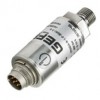 1000 bar, 15000 psi, 100 MPa Pressure Sensors, Transducers & Transmitters - High range pressure sensors with a measurement range from 0 to 1000 bar, 15,000 psi, or 100 MPa.
1000 bar, 15000 psi, 100 MPa Pressure Sensors, Transducers & Transmitters - High range pressure sensors with a measurement range from 0 to 1000 bar, 15,000 psi, or 100 MPa. High Pressure Transmitters - High pressure transmitters with 4 to 20 mA current output for measuring hydraulic pressure greater than 100 bar (1500 psi) with a range of accuracies, electrical interfaces and pressure connectors.
High Pressure Transmitters - High pressure transmitters with 4 to 20 mA current output for measuring hydraulic pressure greater than 100 bar (1500 psi) with a range of accuracies, electrical interfaces and pressure connectors.
Related Product and Application Guides
Product Description
Measuring high range pressure is typically required when working with hydraulic systems that generate large loads and forces, such as cranes, lifts, construction equipment, and structural test machines.
On hydraulic systems the pressure is often in the order of a few hundred (x100) bars or a few thousand (x1000) psi. Hydraulic pressures can be highly destructive to sensitive components such as measurement instrumentation, and therefore these devices have a very robust mechanical design to withstand the rapid rise and fall of very high pressures over many cycles.
It is also possible to measure pneumatic systems with very high pressures. In some ways pneumatic systems are less destructive than hydraulic systems because there is no fluid movement to create a hammer effect, however the safety risks are a greater concern, because of the risk of escaping high pressure gas which is capable of propelling objects to a high velocity.
Pressure units which are used to describe high pressure ranges include bar (bar), megapascals (MPa) or pounds force per square inch (psi, lbf/in2), or kilopounds force per square inch (kpsi, ksi).
Pressure sensors are measurement devices for detecting variations in pressure of liquids or gases. Typically a pressure sensor is made of two subcomponents, an electromechanical assembly on the frontend, and a signal conditioning module on the backend.
The frontend of the pressure sensor is connected directly via a thread or clamped seal to a pipe or vessel containing the liquid or gas to be measured. The pressure generated by the liquid or gas will apply a force to a sensitive exposed surface area within the electromechanical assembly which produces a physical change to the material, such as a deformation. This physical change is translated into an electrical change by smaller elements incorporated into the sensitive part of the assembly, typically on the reverse side of the surface in contact with the liquid or gas.
Since there are many different types of electromechanical technology used to measure pressure, producing very different electrical characteristics, it is necessary to add on a signal conditioning module to rationalise the electrical signal and convert it to one which is a commonly used standard within a particular industry or application.


